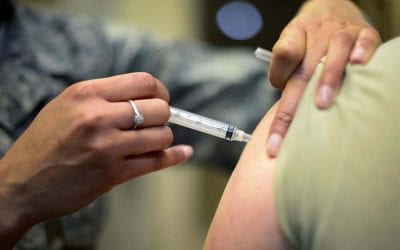I cruise often. In the last two years, I’ve cruised among ports on five continents, missing only North America and Australia.
Over the years, I’ve seen significant safety improvements made on cruise ships I’ve sailed. The changes have ranged from improved and more timely scheduled muster drills, to more life-vests available on the ship specific to both adults and children, to peep holes installed in cabin doors, to improved crew training, and much more.
In the last year, I’ve noted the most overt and most important safety improvements I’ve ever seen in the cruise industry.
That’s not surprising. It was just a year ago yesterday that the Costa Concordia cruise ship sank in calm waters off the coast of Isola del Giglio, killing 32 people. That sinking gave Costa Cruises a major black eye, which rubbed off, to a large extent — and rightly so — on the entire cruise industry.
In my opinion, cruising on the world’s major cruise lines until that time wasn’t unsafe, but much could have been already done to make cruising safer.
The Costa Concordia disaster was a true disaster, not just because 32 people among 3,206 passengers and 1,023 crew members on board lost their lives, but because they lost their lives so unnecessarily.
A year after the disaster we know that the lack of a timely passenger safety drill, poor navigation and navigational decisions, a crew which was not well trained, a lack of well-timed decisive orders to the crew, and poor decision-making by the top officers of the ship, including the captain, all contributed to those deaths. To me, the most surprising thing about the deaths was that there were so few of them compared to what might have been.
While there have been a number of important safety initiatives adopted by the cruise industry since the Concordia disaster, two in particular can save many lives in the event of a cruise ship accident. In a serious accident or mishap aboard a cruise ship, how well both passengers and crew are prepared will be key to saving their lives.
Solid preparedness will help both crew and passengers remain calm and not panic in the event of a serious accident such as an onboard fire or a collision which compromises the hull.
New requirements and procedures adopted by the cruise industry for passenger training via muster drills and ongoing crew accident training will help ensure passengers and crew are prepared in case of an emergency.
(It’s important to note that many cruise lines had internally implemented these new procedures years ago, understanding their need to protect both their passengers and crews.)
The muster drill is when the passengers learn how to don their life-vests, where they go in the case of an emergency, what procedures they must follow, what contingencies would be available for them under various conditions, how they will be informed of emergencies and what they are to do if one occurs, etc. During the muster drill, assuming it is well carried out, is a time when the passengers can gain confidence in the ability of the crew to assist them to ensure their safety.
Before the Concordia disaster, cruise ships were permitted to hold the muster drill up to 24 hours after the ship sailed, though most cruise lines required their ships hold the drill before the ship left its port of embarkation. Now, muster drills are required to be completed before leaving the port of embarkation.
The Costa Concordia had several hundred passengers who’d boarded the ship the day of the disaster and hadn’t yet attended a drill.
I recently returned from a cruise on Silversea Cruises. As each passenger was checked in at the embarkation port, they were informed of the muster drill’s time, that attendance was mandatory, and that the drill had to be completed before the ship sailed. Arriving at their muster station, each passenger was checked in as they arrived. When it was clear a few passengers weren’t in attendance, they were fetched by members of the crew before the drill continued.
No one was permitted to miss the muster drill on our ship. From what I’ve observed, this is now standard.
As important as the muster drill is for passengers and crew, the crew safety drill exercises are also critical for everyone’s safety. While the muster drill is an important training exercise where the crew gets to interact with passengers, it is only one type of regularly scheduled, essential safety drills in which the crew participates.
While on the 10-day cruise, there was a crew-only safety drill, which in this case was a fire drill. During the fire simulation, the seriousness of the problem was escalated several times, which required increased action by the ship’s personnel. The simulation was made as realistic as possible and even included actually closing the water-tight doors throughout the ship. Like all passengers, I heard the directives given from the bridge to the crew. It was a highly comprehensive training exercise.
As a cruiser, I am extremely pleased the industry has substantially upgraded ships’ safety. It would have been a travesty on top of a tragedy if cruise ship operators permitted the lessons learned from the Concordia disaster, which claimed 32 lives, to go unheeded.
After many years working in corporate America as a chemical engineer, executive and eventually CFO of a multinational manufacturer, Ned founded a tech consulting company and later restarted NSL Photography, his photography business. Before entering the corporate world, Ned worked as a Public Health Engineer for the Philadelphia Department of Public Health. As a well known corporate, travel and wildlife photographer, Ned travels the world writing about travel and photography, as well as running photography workshops, seminars and photowalks. Visit Ned’s Photography Blog and Galleries.


